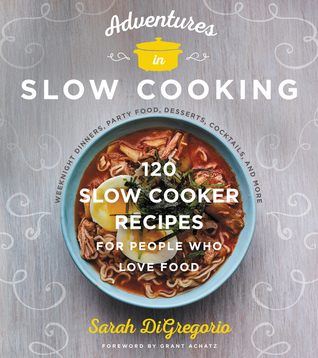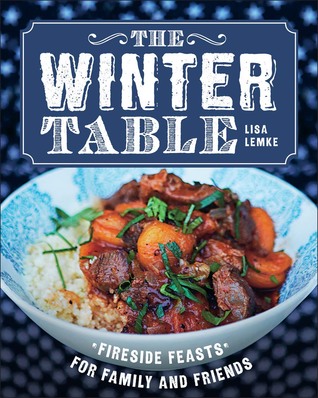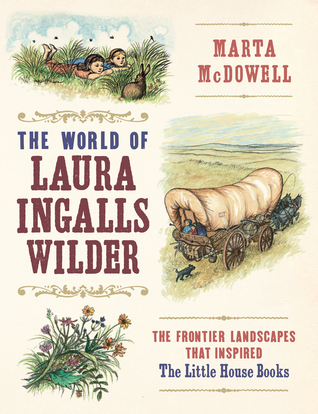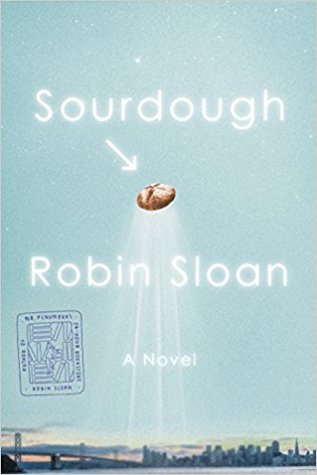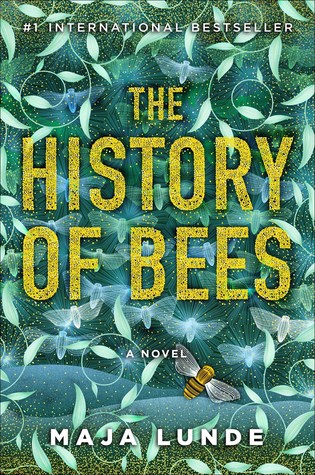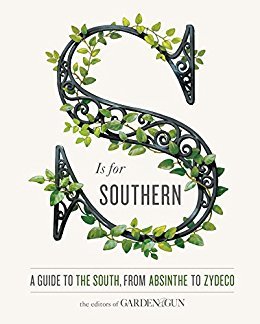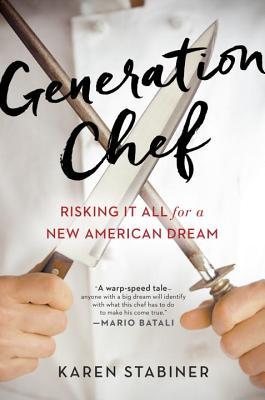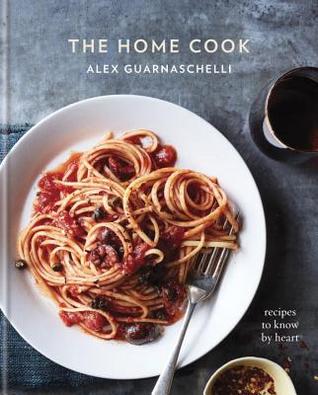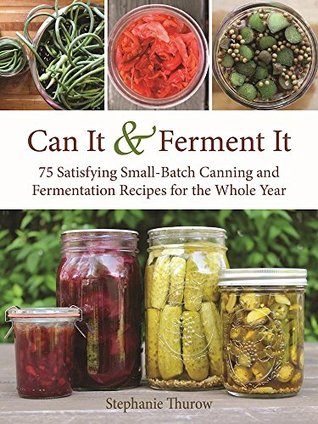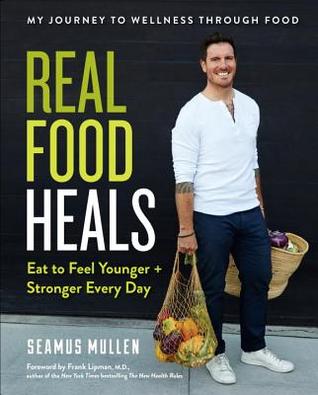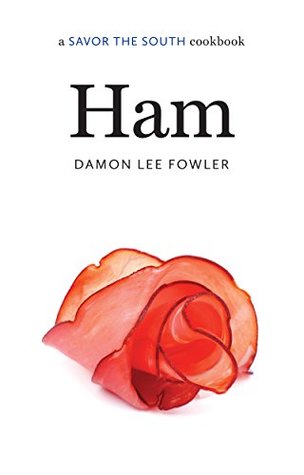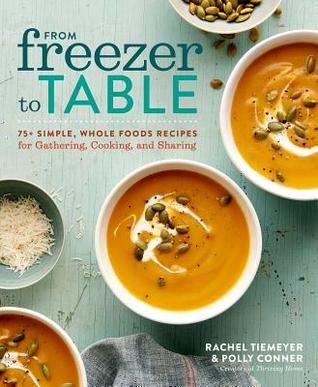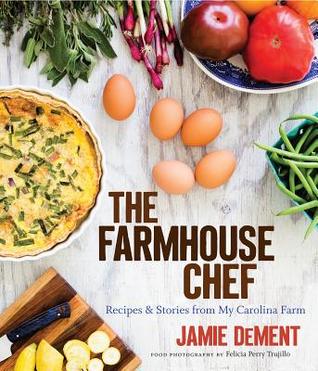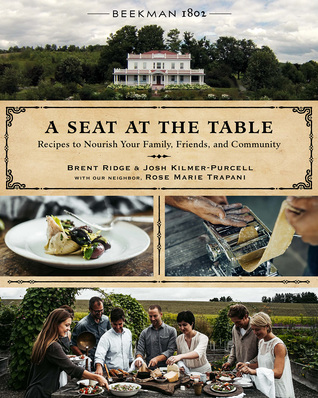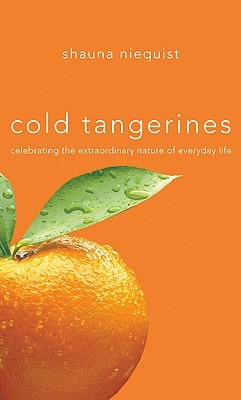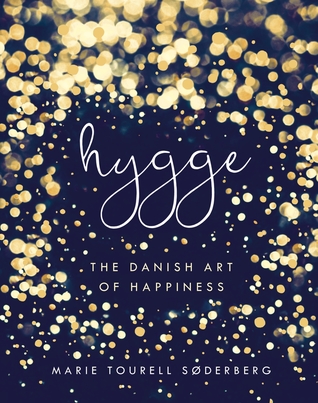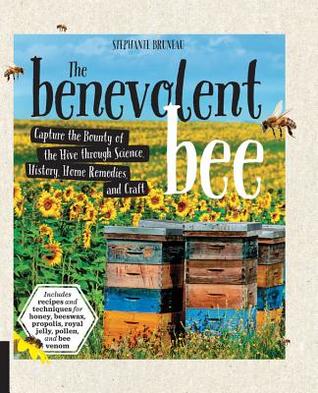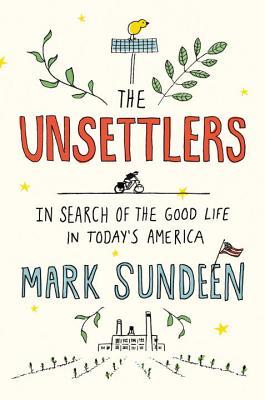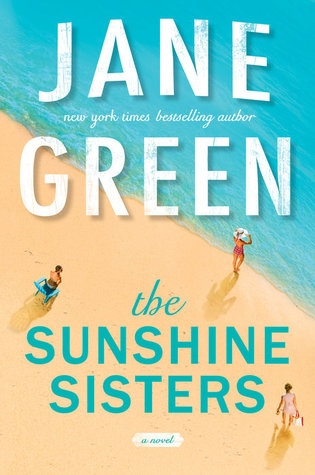Rest: why you get more done when you work less by Alex Soojung-Kim Pang
Putting in the most hours at work with the least amount of sleep has become a rite of passage for many working Americans today. Pang makes the case that rest, and by rest not just sleeping, but doing things outside of work, is vital to living longer and being more productive at work. The book is divided into 2 sections - Stimulating Creativity and Sustaining Creativity. In both sections Pang gives MANY examples of current and historical famous/well-known people in a variety of scientific and creative fields and how they were more productive by working for shorter more concentrated hours. There is a lot of scientific research about rest and how it impacts creativity and productivity. There was a lot of really fascinating information, but I feel like only a small percentage of the workforce could actually implement some of the suggestions/work habits. Pretty much only authors, scientists, freelancers, etc. could really only "work" for 4 hours a day and incorporate naps and exercise into the normal workday hours. While most of the work habits could be incorporated in some way with most people he didn't really address parents at all (and I'm not a parent, but still that's a pretty big factor for many working people). Overall, there is some really interesting information and it would be worthwhile to try to incorporate some of these habits/ideas into your work life, but much of it is more applicable to self-employed/freelance type jobs.
Some quotes I really liked:
"Work and rest are not polar opposites. You cannot talk about rest without also talking about work. Writing about only one is like writing a romance and naming only one of the lovers. Rest is not work's adversary. Rest is work's partner. They complement and complete each other." (p.2)
"Rest is not something that the world gives us. It's never been a gift. It's never been something you do when you've finished everything else. If you want rest, you have to take it. You have to resist the lure of busyness, make time for rest, take it seriously, and protect it from a world that is intent on stealing it." (p. 10)
"In much of the world today, naps have fallen out of favor. They're now something that young children do on kindergarten mats, not something for adults, least of all leaders and serious minds...Even during his country's most desperate hours, when he felt the fate of the nation and civilization hanging in the balance, Churchill found time for a nap. We would be wise to ask if our days and our work are really more urgent." (p.128)
"The Duke Divinity School's Clergy Health Initiative found in a 2014 survey that 25 percent of full-time Methodist clergy suffered from emotional exhaustion, depersonalization, and a reduced sense of accomplishment (the three major symptoms of burnout), leading to poorer health and higher-than-average rates of obesity, hypertension, depression, and anxiety. (In fact, the term workaholic was first coined in a study of ministers.)" (p. 163-4)
"Regularly and decisively breaking from our jobs, disconnecting from the office in the evenings and on weekends, and choosing to do things that are relaxing, mentally absorbing, and physically challenging - in other words, engaging in a form of active rest - will promote recovery of our mental resources and make us more effective, productive, and focused. Rather than treating vacations as big, annual events that are completely separate from our working lives, taking shorter but more frequent vacations every few months provides greater levels of recovery." (p.172)
"Many of these studies have demonstrated that staying physically active in your forties and fifties - the period when you're likely to be busiest with family and work and when excuses to skip exercise come most easily - pays off for decades: exercising in midlife reduces the risk of chronic disease and dementia late in life." (p. 193)
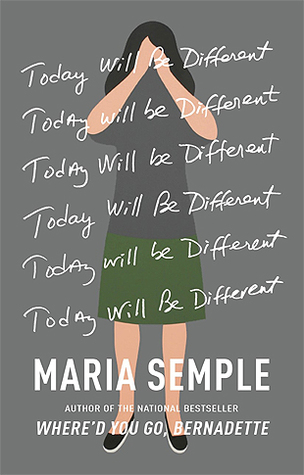
Today Will Be Different by Maria Semple
Eleanor Flood's life is chaotic and scrambled, but when she wakes up she decides that Today Will Be Different. Today she'll spend meaningful time with her son, go to yoga (not just wear the pants), spend more time on her appearance, and initiate sex with her husband. But, things don't go as planned and Eleanor's day quickly falls apart - even more so than it normally does. After this crazy day will Eleanor change her ways or realize her life is not as bad as she made it out to be?
The only good thing I have to say about this book is that it's a quick read. I read it over the course of one day. But, Eleanor is NOT a likable character and I couldn't relate to her or feel any sympathy for her at all. Eleanor doesn't work, but constantly complains about every little thing like making breakfast for her family. Her husband seems like a saint to still be married to her, but she complains about him all the time too. For me the worst thing about this book was how much Christianity and faith were bashed throughout the whole book - if I wasn't reading this for my work book clubs I would have put it down after the first chapter. The ending is especially offensive and really makes Eleanor look like a hateful person with no redeeming qualities. There were some family storylines that could have been explored more and made for a slightly better book, but she left a lot of things hanging. She also named her son after an iPhone autocorrect - need I say more about this ridiculous character?! This is a frivolous book of first-world, white-rich-person problems with a hateful, anti-religious character. Definitely can't wait to see what the people in my book clubs thought of this one...
Some terrible quotes from this book:
"As everybody knows, being raised Catholic with half a brain means becoming an atheist." (p. 9) - Nice way to alienate a large percentage of your readers in the first chapter!
"When I was pregnant, we learned it was going to be a boy. Joe and I ecstatically volleyed names back and forth. One day I texted Timothy, which autocorrected to Timby. How could we not?" (p. 36) - Ugh. Really? This character is 40 years old at the time, not 12.
"'You and me?' I continued to Alonzo. 'We're artists. We've chosen a path that's ninety-nine percent hardship and rejection. But, we're in it together. That's what counts.' 'Save it,' Alonzo said. 'You're a woman with a rich husband.'" (p. 196) - the most accurate description of this character in the book.
"'It couldn't be more sensible,' Joe said. 'Instead of trying to impose your will on an uncontrollable universe, you can surrender to the wisdom of Jesus.' 'Please stop saying Jesus. People might think we're poor.' [said Eleanor] 'I'm acutely aware that becoming a Christian is the least cool thing a person can do.' [said Joe]
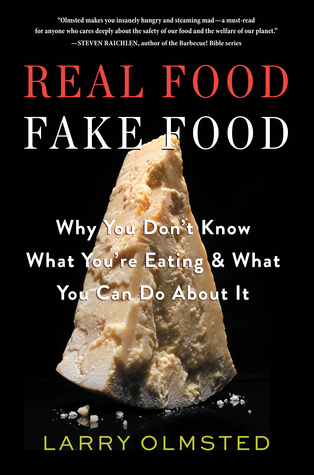
Real Food Fake Food by Larry Olmsted
If you're already suspicious of the industrial food industry like I am, this book will only make things worse for you. Larry Olmsted reveals just how widespread food fraud is and how it can impact your health. Usually higher value products like olive oil or Kobe beef are fraudulently sold in order to make a higher profit from a lower-grade product. But, sometimes the food fraud can introduce harmful chemicals or other foods that people may be allergic to like substituting fish for lobster or crab meat. While this can be depressing and disheartening, Olmstead does give tips at the end of each chapter about how to source true and ethical products both in purchasing and when eating out. The best advice he gives as the last lines of the book, "It's worth the time to cook Real Foods. It is also worth the effort to shop for them and worthwhile to support the real people who make them. Keep it real." (p. 287) And I agree and live by Joel Salatin's advice - support your local lunatic farmer! I also think another part of the overall problem is that people have now come to expect regional specialties like real maple syrup or Maryland blue crabs to be available year-round in every corner of the world. Some things should just be experienced in their natural environment - eat seafood at the beach, fruit when it's in season, tomatoes in the summer, etc. We need to get back to eating real food, but also eating seasonally.
Here are some quotes I really liked:
"Bluntly, the seafood industry is rife with fraud, substitution, and adulteration. Imagine if half the time you pulled into a gas station you were filling your tank with dirty water instead of gasoline. That's the story with seafood." (p. 46)
"Ninety-one percent of the seafood consumed in the United States is imported, and about half of this is farmed. Yet only one-thousandth of 1 percent of imports are inspected for seafood fraud. In addition, about a third of the imported seafood is poached or caught illegally, which further obfuscates any clue about its actual origins." (p. 60)
"So, for instance, flounder is the acceptable market name for labeling more than two dozen different fish, some of which are actually flounders, but also unrelated species, such as brill and a couple of types of halibut that can legally be sold as flounder." (p. 73)
"While the USDA dictates rules for olive oil labels, it is the FDA that is responsible for ensuring the truthfulness of label claims. After more than seven decades of consistently finding rampant fakes and adulterated oil, the FDA gave up as a cost-cutting measure." (p. 100)
"So why aren't we eating more grass-fed beef? The simple answer is money. It costs and estimated 17 percent extra to raise beef on grass than grain, according to USDA documents. Packing cows into indoor feedlots and forcing them to eat silage is cheaper. Beef gets a bad health rap, despite the fact that humans are by nature designed to eat meat - and have been eating it for longer than most grains and other modern or cultivated food. But the real problem may not be beef itself but rather our beef. The fat in industrial or feedlot beef - what the industry calls conventional beef, because this modern laboratory experiment has become the norm - is much less healthful than it should be. True grass-fed - and not grain-finished - beef is higher in vitamins A, E, and anti-oxidants, but most important, it's higher in 'good' omega-3 fats and lower in 'bad' omega-6 fats." (p. 243)
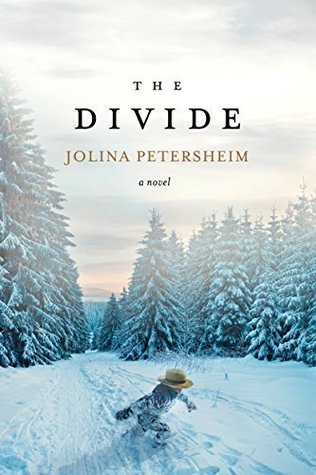
The Divide by Jolina Petersheim
The Divide picks up a few months after The Alliance ends. Moses tries to fight off invaders of the Mennonite community while they flee into the surrounding woods. In the process Moses is shot, but survives and finds his way into a newly formed militia based out of the nearby airport. In the new Mennonite community Leora struggles to keep her family safe in their new community. After a frightening encounter in the woods Leora realizes there is a new threat - the Agricultural Resurgence Commission or ARC. This agency is trying to form a pseudo government by corralling people and forcing them to work growing food, but they are really more like a very organized gang of thugs killing anyone who doesn't comply. And also picking up where The Alliance ends, Leora struggles with her feelings for Moses, but knows it might be easier and better for her family if she married Jabril. Both the militia and the Mennonite community struggle to know what to do in this new, dystopian reality.
I really only read this book to find out what happens with Leora and Moses and in that respect it doesn't disappoint. The ending of the book is still somewhat unrealistic, but more realistic than the ending of The Alliance. Overall, this is part 2 of the Hallmark movie version of a dystopian story and there is a happy (considering the circumstances) ending. I wouldn't highly recommend, but I definitely wanted to keep reading to see what happened to everyone.

Braving the Wilderness by Brené Brown
In Braving the Wilderness Brown explores what it means to truly belong in an age of increasing polarization. She lays out four practices of true belonging: 1) People are hard to hate close up. Move in. 2) Speak truth to bullshit. Be civil. 3) Hold hands. With strangers. 4) Strong back. Soft front. Wild heart. and explores each one in a chapter. Throughout the book there is a LOT of encouragement for what she calls standing in or Braving the Wilderness. The wilderness is outside of the box and can often feel like a lonely place, but the wilderness is where you can really be yourself and that is often where you find the people you truly connect with. She also lays out seven elements of trust (both trusting ourselves and others) in the acronym BRAVING - Boundaries, Reliability, Accountability, Vault, Integrity, Nonjudgment, and Generosity. All of these practices are pulled from extensive research and interviews. This is like a self-help book meets a scientific exploration on belonging. I had never read anything by Brown, but had heard good things about her. I didn't really know what to expect with this book, but it was very well-written and I really connected with it. I will definitely be reading more of her books!
Some quotes I really liked:
"While going through a stack of information on upcoming speaking events, I read a note from one organizer: 'We heard you speak at a conference last year. We can't wait to have you speak to our leaders! When we saw you you, you talked about the importance of knowing your core values - we love that. However, you mentioned faith as one of your two guiding values. Given the business context, we'd appreciate you not mentioning faith. Courage was the other one of your values and that's great. Can you stick to that one?' I could feel my chest tightening and my face growing hotter by the second. Something similar, though at the other extreme, had happened earlier that year. An event organizer had told me that while he 'appreciated my direct and down-home approach,' he'd like me to not curse, which risked losing some of the 'faithful audience' who would 'offer me grace' but still be offended. Bull. Shit. This is total bullshit. I'm not doing this. I'd rather never speak again. I am done moving. I've spent my entire career sitting across from people, listening to them tell me about the hardest and most painful moments of their lives. After fifteen years of this work, I can confidently say that stories of pain and courage almost always include two things: praying and cussing. Sometimes at the exact same time....I'm not going to go all Joe Pesci in Goodfellas, but if you can't handle me saying 'pissed off' or 'bullshit,' or you need me to pretend that faith doesn't matter to me, I'm not your girl. There are lots of great teachers and speakers - you'll just need to find one who will dress up, clean up, and shut up. That's not me. Not anymore." (p. 24-5)
Brene's definition of True Belonging: "True belonging is the spiritual practice of believing in and belonging to yourself so deeply that you can share your most authentic self with the world and find sacredness in both being a part of something and standing alone in the wilderness. True belonging doesn't require you to change who you are; it requires you to be who you are." (p. 40)
"But then, if it's the case that we can care about citizens and the police, shouldn't the rallying cry just be All Lives Matter? No. Because the humanity wasn't stripped from all lives the way it was stripped from the lives of black citizens. In order for slavery to work, in order for us to buy, sell, beat, and trade people like animals, Americans had to completely dehumanize slaves. And whether we directly participated in that or were simply a member of a culture that at one time normalized that behavior, it shaped us. We can't undo that level of dehumanizing in one or two generations. I believe Black Lives Matter is a movement to rehumanize black citizens. All lives matter, but not all lives need to be pulled back into moral inclusion." (p. 77)
"Funerals, in fact, are one of the most powerful examples of collective pain. They feature in a surprising finding from my research on trust. When I asked participants to identify three to five specific behaviors that their friends, family, and colleagues do that raise their level of trust with them, funerals always emerged in the top three responses. Funerals matter. Showing up to them matters. And funerals matter not just to the people grieving, but to everyone who is there. The collective pain (and sometimes joy) we experience when gathering in any way to celebrate the end of a life is perhaps one of the most powerful experiences of inextricable connection. Death, loss, and grief are the great equalizers." (p. 132-3)
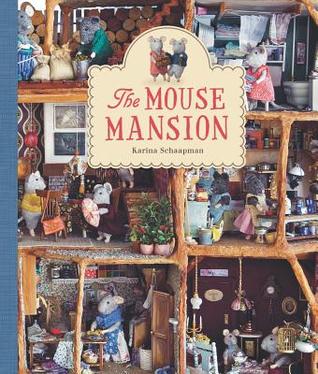
The Mouse Mansion by Karina Schaapman
I love children's book with illustrations like this - more like photographs of a scene. The author spent years creating Mouse Mansion out of cardboard boxes and paper mache. The mansion has over 100 rooms and each one is completely decorated and filled with little mouse-sized accessories. The picture of the whole mansion at the beginning of the book really shows how much work went into creating this! And the story line is so cute with two friends Julia and Sam exploring the Mouse Mansion and playing. My favorite scene is when Julia has chicken pox and the little mouse doll has embroidered dots all over - so cute and clever! Overall, a really unique picture book. This is one I might have to buy.
Hello, Sunshine by Laura Dave
Sunshine Mackenzie seems to have it all - a YouTube culinary star with millions of fans, a cookbook deal, an offer for a TV show from the Food Network, a beautiful home, and an adoring husband. But, on the night of her thirty-fifth birthday Sunshine is hacked and all her secrets come to light. She loses everything on that night - her future TV show, cookbook deal, house, and husband. With nowhere else to go she goes home to Montauk, NY - the one place she ran away from as soon as possible. Not being on great terms with her older sister Rain makes the homecoming even more awkward. But, while trying to pick up the pieces of her life and figure out her next move, she starts to reconnect with her family. First her niece Sammy and little by little with her sister too. Can Sunshine reinvent herself again, or will she start to realize who she is already is enough?
I thought the author did a good job with the storyline, especially all the possible people potentially behind Sunshine's hack - and the actual culprit was still a surprise. I also liked that the ending wasn't wrapped up too neatly and perfectly, but I did want to know whether Sunshine and her husband were going to be able to work it out or not. I would definitely read something else by this author.
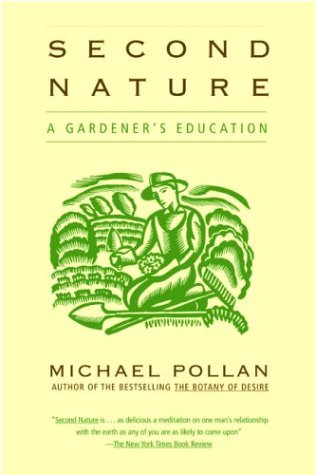
Second Nature: A gardener's education by Michael Pollan
I love Michael Pollan and was excited to read this re-print of one of his earlier books. Second Nature is a collection of essays about gardening and the education of becoming a gardener. While I didn't love this book as much as The Omnivore's Dilemma, there were still some really great parts. Pollan describes his first two garden experiences - his grandparent's huge vegetable garden and his parent's anti-lawn. I laughed out loud at the section where Pollan's dad is chastised by a neighbor about his un-mowed lawn, so he goes out and cuts his initials into the tall grass instead of actually cutting the grass. Pollan's own first garden attempt on an old dairy farm he and his wife purchased in Connecticut involves an epic battle with a woodchuck and other wildlife happy to eat his newly planted vegetable garden. While Pollan does include stories of his own gardening adventures, he also works in the history of various aspects of gardening and how they've evolved to today. It's not his best book in my opinion, but definitely worth reading if you're a gardener.
Some quotes I really liked:
"Bindweed, whose roots may reach ten feet down, can reproduce either by seed or human-aided cloning. For its root is as brittle as a fresh snapbean; put a hoe to it and it breaks into a dozen pieces, each of which will sprout an entire new plant. It is as though the bindweed's evolution took the hoe into account. By attacking it at its root - the approved strategy for eradicating most weeds - I played right into the insidious bindweed's strategy for world domination." (p.104)
[on the two camps of weed definition] "'A weed is any plant in the wrong place' fairly summarizes the first camp, and the second maintains, essentially, that 'a weed is an especially aggressive plant that competes successfully against cultivated plants.' In the first, Emersonian definition, the weed is a human construct; in the second, weeds possess certain inherent traits we did not impose. The metaphysical problem of weeds, I was beginning to think, is not unlike the metaphysical problem of evil: Is it an abiding property of the universe, or an invention of humanity?" (p. 105)
"I'm convinced that gardening - real gardening, not just putting in beds of flowers or tomatoes - begins with the removal of one's property from the motorist's gaze, with one's secession from the national lawn. This might mean throwing a hedge or fence around your yard, letting it go to meadow, or ripping out the grass and putting in something else entirely. But once you've done this, made the big break, prepare to feel very much on your own." (p. 230)
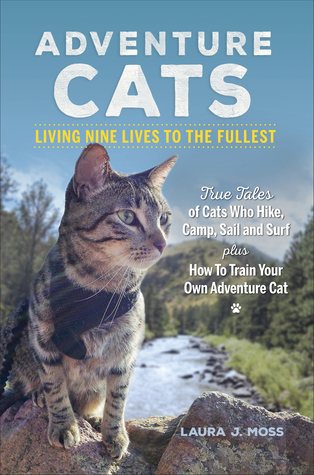
Adventure Cats: living nine lives to the fullest by Laura J. Moss
I stumbled across this book and knew I had to check it out! Adventure Cats shares the stories of 16 real life adventure cats and how their owners got them out hiking, kayaking, and even surfing. The book is divided into chapters about how to train your cat to walk on a leash/harness, first aid, tips for adventuring with your cat, dealing with weather, etc. There is also a helpful quiz to find out if your cat might be the adventuring type - one of mine is definitely not, the other could be, but I don't know how she would do in a harness. I would also feel bad leaving one cat at home and adventuring with the other one. Whether or not you want to take your cat out adventuring or not, this is such a cute book with the Adventure Cat stories and LOTS of great pictures of cats out adventuring. Definitely worth checking out if you're a cat person at all!
The Girl From Venice by Martin Cruz Smith - Evening Edition book club
I wasn't familiar with this author before reading this book for book club, and after reading it I won't be reading any of his other books. The story follows Cenzo, a fisherman living in a small Italian village outside of Venice trying to stay under the radar during WWII. One night while out fishing he finds a girl floating in the water. He impulsively picks her up thinking she is dead, but she is alive and is running from the Nazis. Suddenly Cenzo is thrust into the heart of the war trying to decide who he can trust and how to help Giulia, the girl he found. While the storyline seemed good at the beginning the story goes ALL OVER THE PLACE and is very confusing. A whole host of characters are introduced and many of them don't add to the story. There are a lot of scenes that seem like they might be important, then never touched on again. It was very hard to follow and the ending is pretty unrealistic. There is also an additional layer of Cenzo's brother Giorgio and their bad relationship - even to the end you're not sure if Giorgio is out to get Cenzo or help him. Very confusing and not well done. If you want a good WWII book read All the Light We Cannot See by Anthony Doerr.
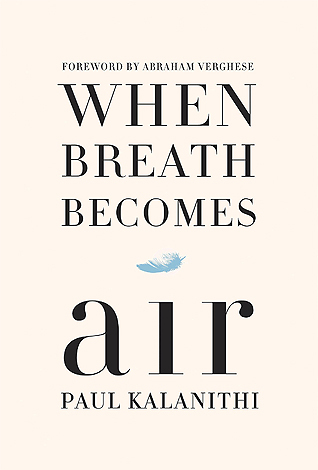
When Breath Becomes Air by Paul Kalanithi - Books & Banter book club
After seven years of medical school Paul Kalanithi is almost done with his neurology residency. When he starts losing weight and experiencing severe back pain he at first thinks it's due to his grueling work schedule where 18 hour days are routine. But, soon he feels like it's something much worse. At the age of thirty-six he is diagnosed with stage IV lung cancer that has also spread to his spine. At what should be the beginning of his professional and personal life (he is recently married to Lucy, another doctor) he is now having to deal with an almost certain terminal prognosis. Kalanithi said in the book if he knew he had 10 years he would continue to practice medicine, if he only had one year he would write a book, and if he only had months to live he would spend his remaining time with his family. He lived for almost 2 years after his diagnosis and managed to do all three - hence this book. What struck me the most with this book is how calm and accepting Kalanithi was - yes, he was upset about the diagnosis, but he continued to live and created new ways to live a meaningful life for whatever time he had left. This book is so beautifully written and so uplifting despite his terminal diagnosis. A very beautiful book that will make you think about how to live your best life now, regardless of what struggles you might be facing. Definitely worth reading and not as sad as you might expect.
Some quotes I really liked:
"Senior year, my close friend Leo, our salutatorian and the poorest kid I knew, was advised by the school guidance counselor, 'You're smart - you should join the army.' He told me about it afterward. 'Fuck that,' he said. 'If you're going to Harvard, or Yale, or Stanford, then I am, too.' I don't know if I was happier when I got into Stanford or when Leo got into Yale." (p. 28)
"The problem, however, eventually became evident: to make science the arbiter of metaphysics is to banish not only God from the world but also love, hate, meaning - to consider a world that is self-evidently notthe world we live in. That's not to say that if you believe in meaning, you must also believe in God. It is to say, though, that if you believe that science provides no basis for God, then you are almost obligated to conclude that science provides no basis for meaning and, therefore, life itself doesn't have any." (p.169)
"Yet I returned to the central values of Christianity - sacrifice, redemption, forgiveness - because I found them so compelling. There is a tension in the Bible between justice and mercy, between the Old Testament and the New Testament. And the New Testament says you can never be good enough: goodness is the thing, and you can never live up to it. The main message of Jesus, I believed, is that mercy trumps justice every time." (p.171)
